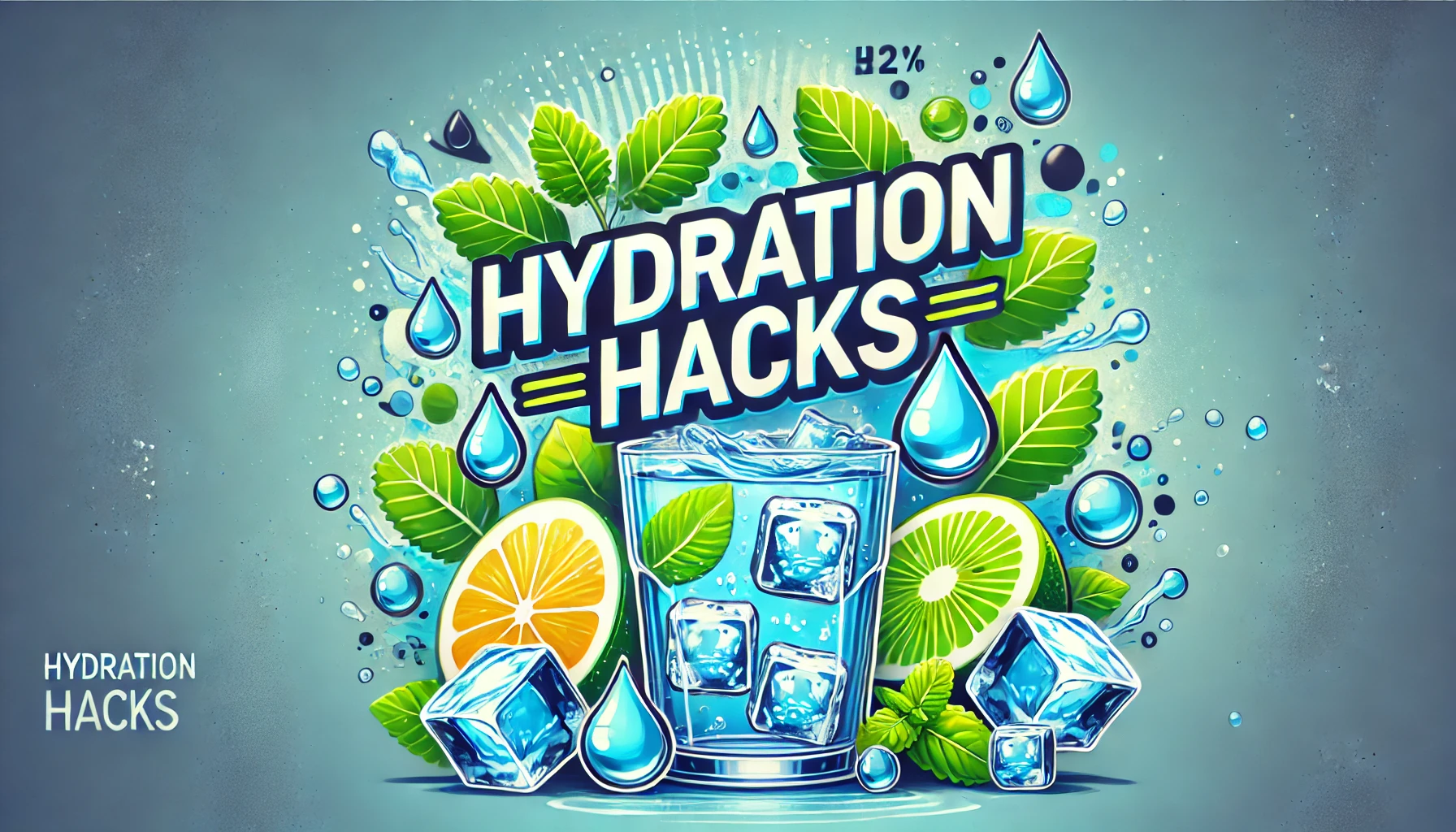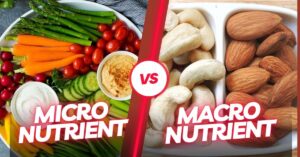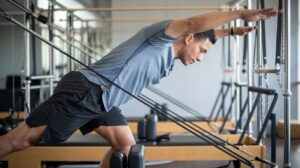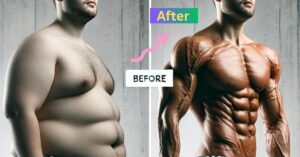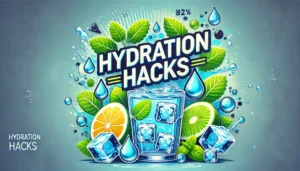Table of Contents
ToggleIntroduction:
Keeping the body hydrated is the most basic but effective method to enhance general performance and sustain body energy levels. Even though it is vital, many of us still fail to drink sufficient amounts of water during the day. After all, the reasons for this are numerous: a tight working timetable, neglect, or just an aversion to regular water. Neglecting water can cause tiredness and headaches or even affect one’s health more seriously.
But what if keeping up with hydration seemed like no effort at all and could even be a fun task? In this article, we will look at 10 hydration hacks that you can do to make your day really stand out. Such measures include drinking a glass of water as the first task of the day, eating foods with high moisture content, and so many more, which will ensure that you do not lose your vigour and freshness throughout the day. Let’s get right to it and see how you can turn hydration around from being a bother to a fun part of your day!
Introduction To Hydration: Why It Matters:
People often confuse hydration only with drinking water or any other liquid to satiate their thirst. Hydration is much broader, and it refers to one of the processes that are responsible for a person’s health in general. It is worth noting here that every system in the human body, whether acute or chronic, ordinary and significant, depends on water. Water is necessary for the regulation of body temperature, ointment for the joints, assimilation of nutrients into the cells, and excretion of wastes out of the body. Even a slight lack of water in the body can mildly dehydrate it, bringing low moods, low energy levels, and even clouded thinking.

The Value of Proper Hydration in Health and Energy Levels:
Considering that water constitutes approximately 60% of the body’s composition, its importance cuts across all body processes. Healthy hydration is also essential to support energy. Whenever you do not have enough water in your body, your blood volume will go down, which means that the heart has to work harder than it is supposed to to pump oxygen and nutrients throughout your body, particularly to the muscles and organs. This extra effort may cause exhaustion and lowered performance in physical activity.
Further, there is a direct correlation between hydration and mental concentration. Lack of water may result in distracting effects such as foggy brain, headache, and difficulty focusing. When you are properly hydrated, you ensure that your brain has enough oxygen and other nutrients to work properly.
Common Signs of Dehydration:
The initial stage of curing dehydration is to know that you are dehydrated and its type. Of the two water shortage symptoms, the following are the most common.
- Thirst: Normally, by the time one feels thirsty, the body may already be a bit dehydrated.
- Dry Mouth and Skin: Dry mouth and chap lips are the simplest symptoms that people can recognise.
- Fatigue: Most normal people do not get to the point of feeling so tired that they can sleep for days unless their bodies need water.
- Low Qty. of Urine: A person’s urine should be light yellow. A dark urine indicates the possibility that the person is dehydrated.
- Dizziness or Lightheadedness: This may happen if dehydration has caused your blood pressure to drop.
- Knowing these symptoms will help you devise ways to make sure the body gets ample water throughout the day.
2. Hydration Hack #1: Start Your Day with Water:
Drink Water First Thing in the Morning It’s not hard to realise how simple and effective it is to start one’s day with water. After a long night’s rest, a big part of your body tends to be dehydrated, and when you drink water first thing in the morning, it prepares your body for the day ahead. This simple habit can significantly change your energy, metabolism, and health levels..
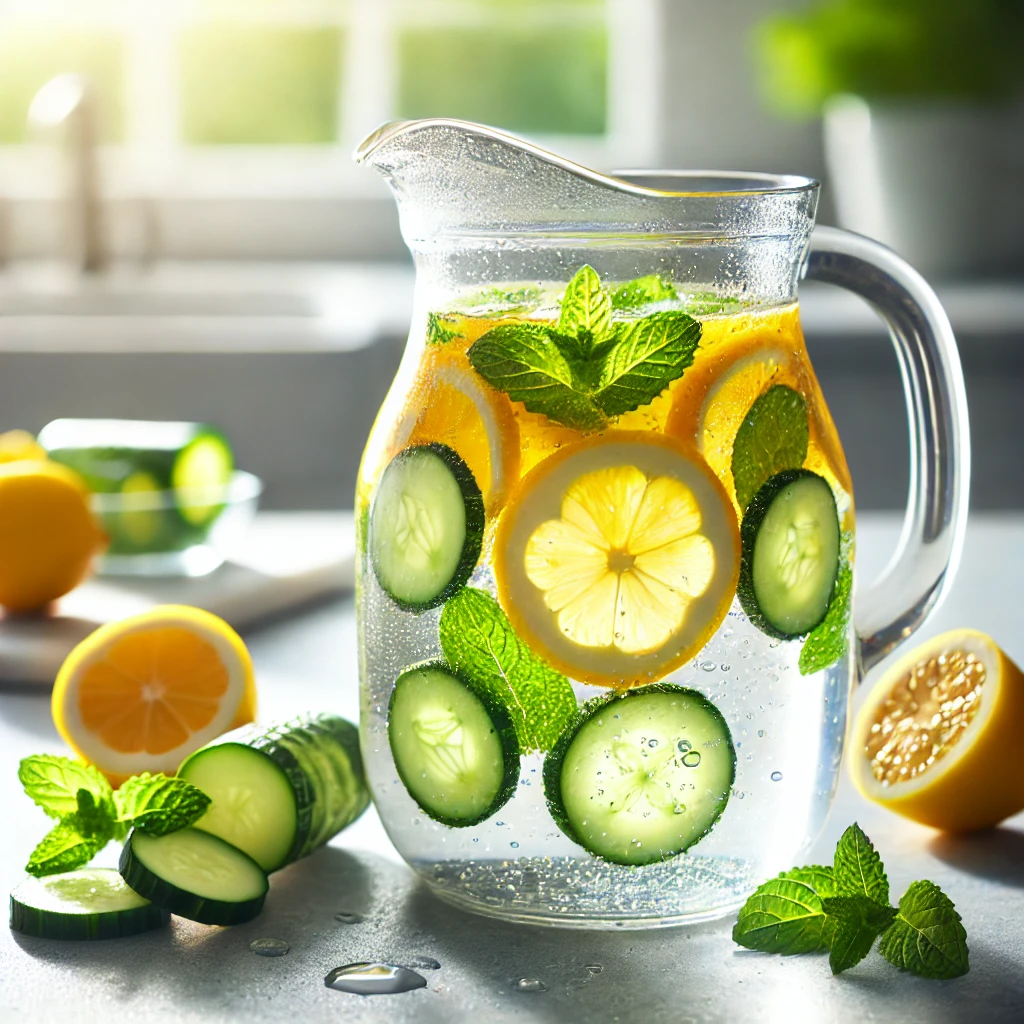
Benefits of Morning Hydration:
What people often ignore is the fact that water is healthy, especially in the morning. Any physical activity requires energy materials, and as such, too, the metabolism of your body by the water intake begins to run some minutes after you wake up. Statistics show that water inside a body increases the rate of metabolism by about thirty percent in approximately one hour. This is a boost of metabolism that helps in the process of digestion, helps the body burn calories more rapidly, and is a positive move towards the achievement of the desired weight target.
Some people forget that water is important to your body’s processes overnight, and detoxification helps with that. For instance, after a long period of sleeping and hardly eating or drinking during the night, water intake is beneficial for improving the kidneys.
Morning hydration also favorably affects your energy levels. Always understand that dehydration is one of the reasons for tiredness. If this occurs first thing in the morning, when the aim is to get as much water in as possible, one hopes to stave off that particularly annoying mid-morning slump. It means that the body has water from the very onset, thus making them more alert and awake.
Tips for Making It a Habit:
It is interesting to note that any deep conviction about the benefits of adding this habit is not necessary as it can become an ordinary routine for most of us with the help of a few simple tricks.
- Keep a Glass of Water by Your Bedside: Doing this eliminates psychological barriers to drinking on an empty stomach right after waking up.
- Set a Reminder: Leverage notes on your phone or your bathroom mirror to remind you to drink water as soon as you get up.
- Add Lemon or Lime: Should you wish to drink plain water and feel bored, you may squeeze a slice of lemon or lime into it, and that should suffice for the vitamin C enhancement.
- Track Your Progress: : Devices or trackers monitoring liquid consumption are often used to record water intake to practice proper water intake on a daily basis.
This reinforces the behavior over some time. Water should be consumed first in the morning, and performing this single modification brings long-term changes in the well-being of the individual. This is an effective hydration tip that is hard to risk, easy to implement, and produces long-lasting results that are favorable to your body and health.
3. Hydration Hack #2: Infuse Your Water with Flavor:
One of the main reasons people fail to consume the recommended amount of water is that they have dull tastes when it comes to plain water. Luckily, this problem has an easy and delicious solution: flavoring water. It not only makes people reluctant to drink water but also provides an additional benefit of including additional vitamins and antioxidants, depending on what is added.
How to Make Water More Tasty:
Infusion water can be prepared in a very short time, and most importantly, it can be made to your taste. There are so many options for adding fruits, vegetables, and herbs to your water, which will make you want to drink it throughout the day. Some of these are simple but add a lot to taste. Below are some popular ingredients to consider:
Citrus Fruits: Lemons and limes are always used for their sourness and crispness. They are rich in vitamin C.
Berries: Strawberries, blueberries, and raspberries are examples of fruit that infuses water with a sweet taste and provides great antioxidant benefits.
Cucumbers: They add some sweetness to this blend and are very refreshing, hydrating, and cool on the mouth.
Herbs: The liquors can also be enhanced using fresh herbs like mint, basil, rosemary, etc., adding to the litres of inner water detox and cleansing.
Ginger: Infusing your water with a little ginger will give it a flavor boost as well as source some of its anti-inflammatory properties.
Healthy Infusion Ideas:
Everyone loves appreciation or tips on how to infuse water. You can add your chosen ingredients to cold water in a pitcher or water bottle. Allow the mixture to be refrigerated for a few hours so that the ingredients can fuse. Here are some infusion combinations to try:
Lemon, Mint, and Cucumber: Nothing quenches and cools as this sylvan infusion on a hot summer.
Strawberry and Basil: Are predominant summer drinks; their sweetness and fragrance are in perfect harmony.
Orange and Blueberry: A zesty infusion packed with scrumptious fruits that freshly burst out with orange and elderberry fruits.
Ginger and Lemon: This infusion has bold, citrusy flavors, which may ease digestion and immunity problems.
Watermelon and Rosemary: Is an infusion that you can drink. It is also very refreshing and quenches your thirst.
Understandably, these waters are wonderful. Enhancing water with flavors for better goes well with active hydrating, especially during the day.
Benefits Beyond Taste:
Besides making water more appealing, it is also possible- to some extent- to enhance one’s health with wards through infused water. The fruits and herbs that you use in your infusions may supply ions, minerals, and antioxidants, as well. As in the case of citrus, you will get Vitamin C, which helps fight infections, while ginger will help you digest food. Another advantage of infused water is that it can be used as a substitute for sweetened beverages, thereby lowering the consumption of empty calories while being sated with a delicious drink.
Infused water is a thirst reliever that makes drinking water interesting by enhancing its taste and infusing it with beneficial substances.
4. Hydration Hack #3: Eat Your Water – Hydrating Foods:
Although drinking water is vital, it is not the only method of rehydrating. A variety of fruits and vegetables are particularly assorted to contain a high amount of water, thereby enhancing hydration. Munching on such hydrating foods will help one meet their water needs as well as obtain other important nutrients that promote general wellness.
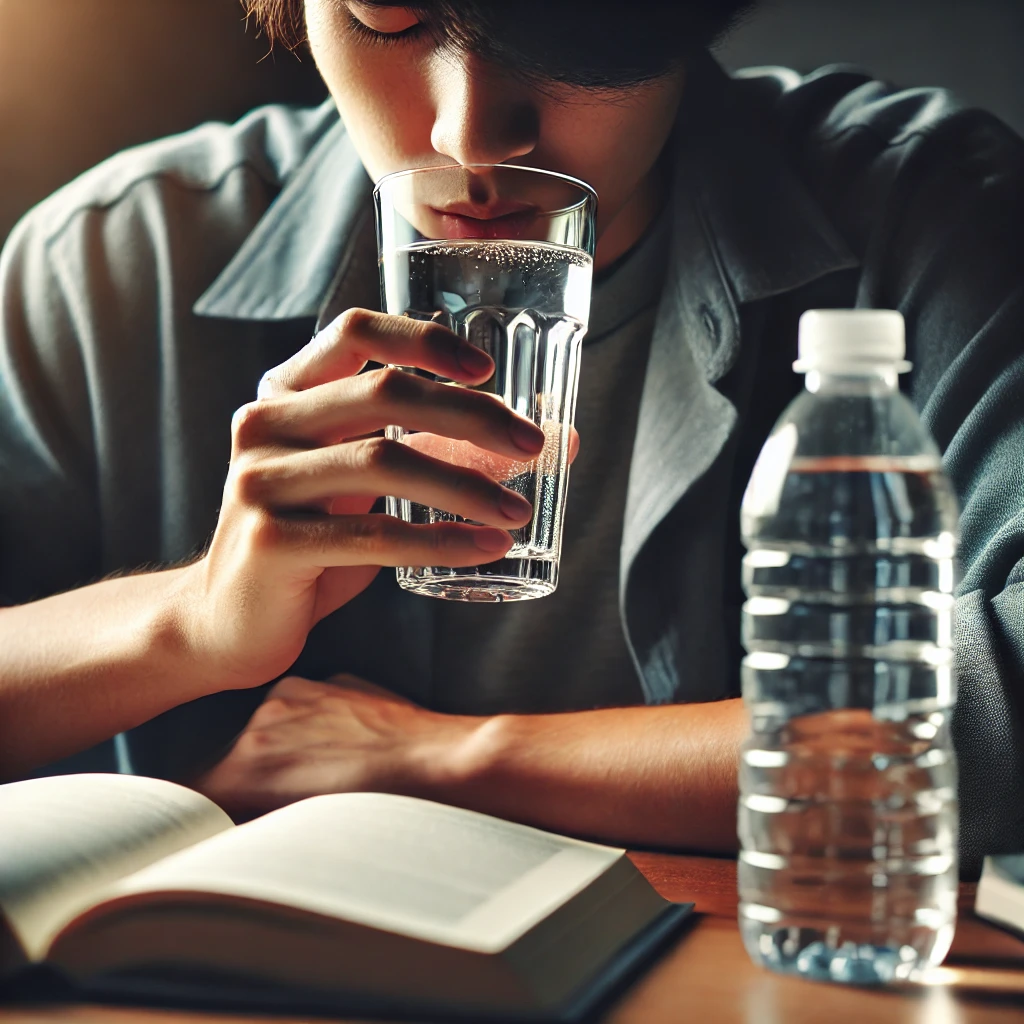
Fruits and Vegetables with High Water Content:
Including foods that have high water content in your meals and snacks is a cute and effortless way of ensuring adequate hydration. Here are some of the healer’s top picks:
Cucumber: Made up of around 95% water, cucumbers are very low in calories and very cooling. Thus, they are used in salads, sandwiches, or munching.
Watermelon: As the name suggests, watermelon is 92% water. It is also high in vitamins A and C, which makes it sweet and refreshing on hot days.
Strawberries: Strawberries are 91% water, juicy, and rich in vitamins A and C. They can be used in healthy smoothies, fruit salads, or eaten as a fruit by themselves.
Lettuce: Leaves like lettuce have about 95% water composition and hence find their way into salads, wrap their contents, and in sandwiches, giving a crunchy way to fulfill thirst.
Celery: With 95% pure water, celery constitutes another hydrating and low-calorie snack. Other than this, celery supplies fiber and vitamins A, K, and C.
Zucchini: Zucchini has a water content of 94%. It can be eaten in many forms, especially in salads and other types of cooking, such as stir-frying. It can even be spiralized to relieve the carb guilt of noodles.
Incorporating Hydrating Foods into Your Diet:
These foods with water content can be quite easily and conveniently added to your daily meal plans. Some of them are given below.
Salads: A good salad with a lettuce or spinach base can be improved by using cucumbers, tomatoes, and strawberries, which can make up most of the water content.
Smoothies: Blend watermelon, cucumber, a handful of green leaves, and virtually any other carefully chosen additions with very little coconut water to create a very nutritious and refreshing drink.
Snacks: Keeping some sticks of celery, a cut cucumber, or some melon cubes in the fridge so that one can munch on them every now and then can be very refreshing.
Soups: Gazpacho is a cold soup served in hot weather. It contains nourishing vegetables like tomatoes and cucumbers and is imaginative and enjoyable.
Sandwiches and Wraps: Sandwiches and wraps are not complete without the addition of crushed vegetables like lettuce, cucumber, and tomato, which adds more moisture, hydration, and texture to the meals.
The Nutritional Benefits of Hydrating Foods:
Apart from having a high water content, these fruits and vegetables also contain a number of vitamins, minerals, and antioxidants that are beneficial to the body’s well-being – or, in other words, are healthy. By way of example, watermelon contains lycopene, an antioxidant that is good for the heart, while strawberries are high in vitamin C, which boosts the immune system. Eating these wholesome foods filled with water is a two-way win; you keep hydrated and give your body the nutrients it requires.
Eating these water-dense foods is simply yummy. It aids in increasing the total amount of water one can take on some days, which will make it easier for a person to feel fresh and energetic all the time.
5. Hydration Hack #4: Set Hydration Reminders:
Also, with all the good intentions and planning, forgetting to take water in the day is one of the numerous challenges that one can face. That is why hydration reminders are very useful. By scheduling reminders, you can curb the common problem of dehydration due to forgetfulness.
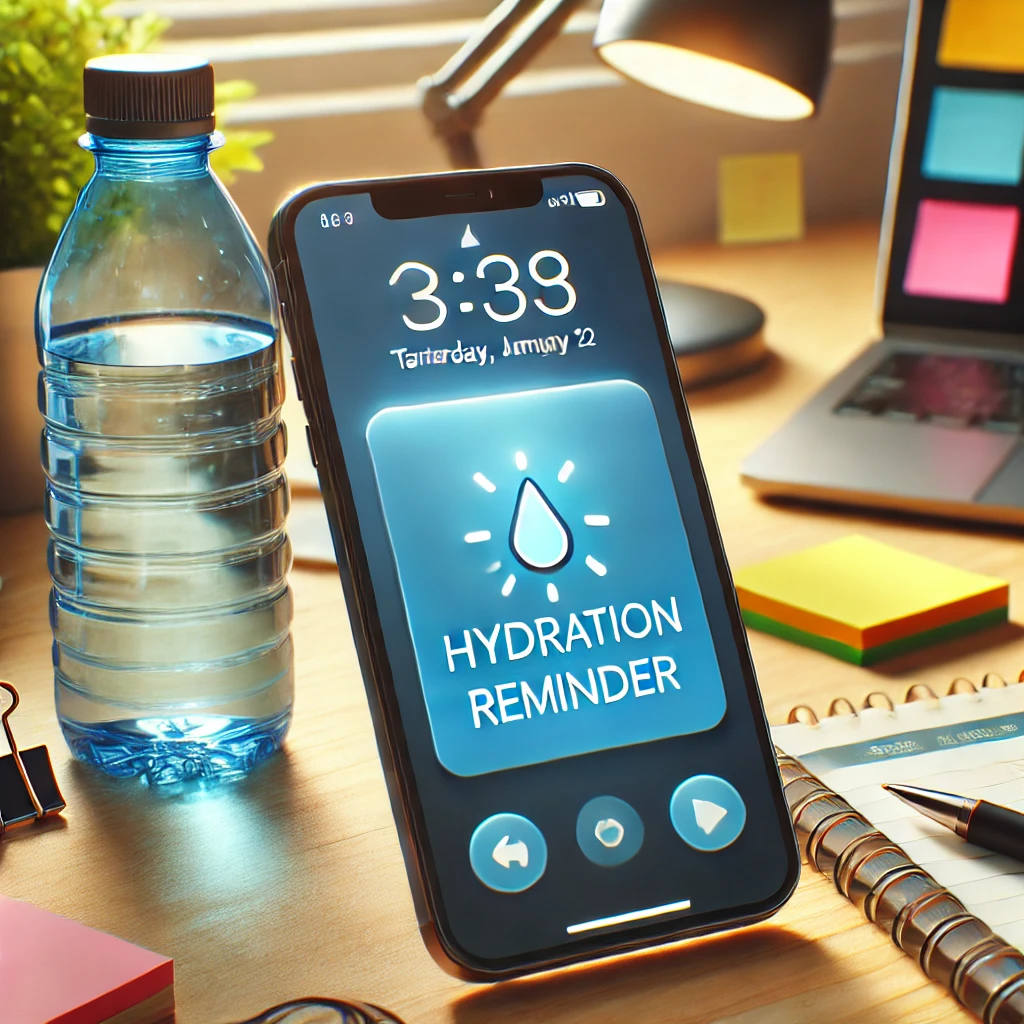
Using Technology to Stay Hydrated:
In today’s digital age, there are countless tools and apps designed to help you remember to drink water. Whether you prefer using your smartphone, smartwatch, or even your computer, setting hydration reminders can be seamless and effective. Here are a few popular methods:
Smartphone Apps: Apps like MyWater, Hydro Coach, and Plant Nanny send regular notifications to remind you to drink water. Many of these apps allow you to set personal goals based on your weight, activity level, and climate, making it easier to stay on track.
Smartwatch Alerts: If you wear a smartwatch, you can set it to remind you to drink water throughout the day gently. This is especially useful if you’re often on the move or involved in tasks that make it easy to forget.
Calendar Reminders: For a simpler approach, you can use your phone’s calendar or alarm function to set hourly or bi-hourly reminders to drink water. This method is straightforward and effective.
Computer Notifications: If you spend a lot of time at a desk, setting hydration reminders on your computer can be helpful. Tools like Google Calendar or desktop apps can send you reminders to stand up, stretch, and drink water.
Creative Reminder Ideas:
While technology is great, sometimes, a personal touch can make hydration reminders more fun and engaging. Here are some creative ideas to keep you hydrated:
Sticky Notes: Place colourful sticky notes on your desk, refrigerator, or bathroom mirror with reminders to drink water. To make it more enjoyable, you can add motivational quotes or fun messages.
Water Bottle Markers: Mark your water bottle at different times throughout the day. As the day progresses, you should aim to reach each marker, ensuring that you’re drinking consistently.
Hydration Challenges: Challenge a friend or coworker to a hydration contest. At the end of the day or week, you can compare your water intake, adding a social and competitive element to staying hydrated.
Use a Special Cup or Bottle: Sometimes, drinking water from a favorite cup or bottle can be more enjoyable. Choose one that you love and keep it with you as a constant reminder.
Benefits of Consistent Hydration:
Setting hydration reminders isn’t just about avoiding dehydration; it’s about forming a healthy habit that can improve your overall well-being. Regular hydration can boost your energy levels, improve your skin’s appearance, and support digestion. By making a conscious effort to drink water consistently, you’re taking an important step toward maintaining a healthy lifestyle.
Consistent hydration also helps prevent the common pitfalls of dehydration, such as headaches, fatigue, and impaired concentration. By staying hydrated, you’re ensuring that your body functions optimally throughout the day.
6. Hydration Hack #5: Carry a Reusable Water Bottle:
Carrying a reusable water bottle with you is one of the most effective ways to ensure you stay hydrated throughout the day. It’s a simple habit that offers both convenience and environmental benefits, making it easier to keep water within arm’s reach no matter where you are.
The Convenience Factor:
Having a water bottle with you at all times means you’re less likely to go long periods without drinking water. Whether you’re at work, running errands, or exercising, a water bottle serves as a constant reminder to stay hydrated. It’s a small action that can significantly impact your daily water intake.
Additionally, carrying your water bottle allows you to control the quality of the water you’re drinking. You can fill it with filtered water from home, avoiding the potential contaminants or high costs associated with bottled water purchased on the go. This is particularly beneficial for those who are mindful of their health and the environment.
Features to Look for in a Good Water Bottle:
Choosing the right water bottle can make a big difference in how likely you are to use it regularly. Here are some features to consider when selecting a reusable water bottle:
Material: Water bottles come in various materials, including stainless steel, Glass, and BPA-free plastic. Stainless steel is durable and often insulated, keeping your water cold for hours. Glass is non-reactive and doesn’t retain flavors, while BPA-free plastic is lightweight and shatterproof.
Size: When choosing the size of your water bottle, consider your daily routine. If you’re often on the go, a smaller, more portable bottle might be ideal. For those who stay in one place, like at a desk, a larger bottle might be more convenient.
Insulation: If you prefer cold water throughout the day, look for an insulated bottle that can keep your drink cold for up to 24 hours. Some bottles can also keep beverages hot, which is great if you like to switch between water and other drinks like tea or coffee.
Ease of Cleaning: A water bottle that’s easy to clean will encourage you to use it more often. Bottles with wide mouths or those that are dishwasher safe can save you time and effort.
Design and Functionality: Some bottles come with built-in straws, handles, or even infusers for adding fruit or herbs to your water. Choose a design that fits your lifestyle and makes drinking water more enjoyable.
Environmental Benefits:
Using a reusable water bottle is good for your health and the planet. By opting for a reusable bottle, you reduce your reliance on single-use plastic bottles, which contribute to environmental pollution. Millions of plastic bottles are discarded every day, many of which end up in landfills or oceans, harming wildlife and ecosystems.
Carrying a reusable water bottle is a small but significant step toward reducing your environmental footprint. It’s a habit that promotes sustainability and encourages others to do the same. Plus, many companies now offer stylish and functional bottles that make going green a fashionable choice.
Staying Motivated to Use Your Water Bottle:
To make the most of this hydration hack. Keep your water bottle in sight and within reach at all times.
If you’re at your desk, place it where you can see it easily.
When you’re out, make it a habit to carry your bottle in your bag or car. You can also set goals for how many times you’ll refill your bottle throughout the day to ensure you’re meeting your hydration needs.
By carrying a reusable water bottle, you can control your hydration and contribute to a healthier planet. It’s a simple yet powerful habit that can have lasting positive effects on your health and the environment.
7. Hydration Hack #6: Spice It Up with Electrolytes:
Electrolytes are minerals that play a crucial role in maintaining your body’s fluid balance, muscle function, and overall hydration levels. When you sweat, exercise, or engage in strenuous activities, your body loses not only water but also these essential electrolytes. Replenishing them is vital to ensure that your body stays hydrated and functions optimally.

The Role of Electrolytes in Hydration:
Electrolytes like sodium, potassium, magnesium, and calcium help regulate the movement of fluids in and out of cells, maintain nerve function, and support muscle contraction. Without a proper balance of these minerals, you may experience symptoms such as muscle cramps, fatigue, and even dehydration despite drinking plenty of water.
For individuals who are physically active or live in hot climates, simply drinking water might not be enough to stay hydrated. Adding electrolytes to your hydration routine can help you maintain this delicate balance, especially during and after intense physical activities.
Natural and Supplement Options:
There are various ways to incorporate electrolytes into your diet, both naturally and through supplements. Here are some options to consider:
Natural Sources: Foods rich in electrolytes include bananas (high in potassium), spinach (a good source of magnesium), and yogurt (contains calcium). Coconut water is also an excellent natural source of electrolytes, particularly potassium, making it a great option for rehydration.
Electrolyte Drinks: Commercial electrolyte drinks are widely available and often contain a balanced mix of essential minerals. However, be cautious of added sugars and artificial ingredients. Look for options that are low in sugar, or choose electrolyte powders that you can add to your water.
Homemade Electrolyte Drinks: You can easily make your electrolyte drinks at home by combining water with a pinch of salt, a squeeze of lemon or lime juice, and a bit of honey for taste. This simple mix can help replenish lost electrolytes after a workout or a hot day outside.
Electrolyte Tablets: If you’re on the go, electrolyte tablets that dissolve in water are a convenient option. They’re portable and can be added to your water bottle whenever you need an electrolyte boost.
When to Use Electrolytes:
Understanding when your body needs extra electrolytes can help you stay properly hydrated. Here are some situations where electrolyte supplementation might be particularly beneficial:
After Exercise: Intense workouts, especially those lasting longer than an hour, can deplete your body’s electrolyte stores. Replenishing them with an electrolyte drink or food can aid in recovery and prevent dehydration.
In Hot Weather: High temperatures increase sweat production, leading to a higher loss of electrolytes. If you’re spending time outdoors in the heat, consider adding electrolytes to your water to stay hydrated.
During Illness: Vomiting and diarrhea can cause significant electrolyte loss. In these cases, rehydration solutions with electrolytes are often recommended to restore balance and prevent dehydration.
For Everyday Wellness: Even on regular days, adding a small amount of electrolytes to your water can help maintain energy levels and ensure you’re staying fully hydrated, especially if you lead an active lifestyle.
Incorporating electrolytes into your hydration routine is a smart way to enhance your body’s ability to stay hydrated, particularly during times of increased physical activity or heat. By balancing water intake with the right electrolytes, you can optimize your hydration and support overall.
8. Hydration Hack #7: Sip Before You’re Thirsty:
One of the most common misconceptions about hydration is that you should drink water only when you feel thirsty. However, by the time you experience thirst, your body is already on the path to dehydration. To stay optimally hydrated, it’s important to develop the habit of sipping water regularly, even before you feel thirsty.
Understanding Thirst Cues:
Thirst is your body’s natural signal that it needs more water, but this signal can often be delayed. Factors like age, activity level, and even certain medical conditions can affect how quickly you feel thirsty. For instance, older adults may have a diminished sense of thirst, making them more susceptible to dehydration without realizing it.
Additionally, in environments where the air is dry, such as in an air-conditioned office or during winter, your body can lose moisture more quickly than usual, further delaying the onset of thirst. This is why there are better strategies than relying solely on thirst as your guide for hydration.
Tips for Proactive Hydration:
To stay ahead of dehydration, here are some tips to help you sip water regularly throughout the day:
Set a Schedule: Establish regular times to drink water, such as first thing in the morning, with each meal, and at specific intervals throughout the day. Setting a schedule can help you develop a consistent hydration routine.
Drink Water with Snacks: Make it a habit to drink a glass of water whenever you have a snack. This not only helps with hydration but also aids digestion.
Use Smaller Sips: Instead of gulping down large amounts of water at once, take smaller sips more frequently. This helps your body absorb the water more effectively and prevents the feeling of being too full.
Incorporate Reminders: Use the hydration reminders we discussed earlier to nudge you to drink water even when you’re not feeling thirsty.
Flavor Your Water: If plain water doesn’t entice you to drink more, try infusing it with fruits, herbs, or a splash of juice to make it more appealing.
Benefits of Staying Ahead of Thirst:
Proactively sipping water throughout the day ensures that your body remains adequately hydrated, which can prevent a range of issues associated with dehydration. These include headaches, fatigue, dry skin, and decreased cognitive function. Staying hydrated also supports your body’s natural processes, such as temperature regulation, joint lubrication, and nutrient transportation.
Moreover, by maintaining consistent hydration, you’re likely to experience better energy levels, improved concentration, and enhanced overall well-being. This proactive approach to hydration can also help reduce the risk of chronic dehydration, which can have long-term effects on your health.
Practical Strategies for Busy Lifestyles:
For those with busy schedules, finding time to drink water can be challenging. Here are some practical strategies to integrate hydration into your day:
Carry a Water Bottle Everywhere: Having water within reach makes it easier to take quick sips throughout the day, no matter where you are.
Link Drinking Water to Daily Activities: For example, drink water when you get up from your desk, after a phone call, or before and after meetings.
Prepare Water in Advance: Fill a large pitcher or several bottles with water at the start of your day. Having a visual cue can remind you to keep sipping as the day goes on.
Hydrate During Commutes: Whether you’re driving, biking, or taking public transportation, use this time to sip on water and stay hydrated.
By sipping water before you’re thirsty, you’re taking a proactive step toward maintaining optimal hydration and supporting your overall health.
9. Hydration Hack #8: Hydrate During Exercise:
Exercise significantly increases your body’s demand for water, making hydration essential during physical activity. When you work out, you lose water through sweat, and if you don’t replace it, you risk dehydration, which can impair your performance and recovery. Staying hydrated before, during, and after exercise is crucial to maintaining energy levels, supporting muscle function, and avoiding the negative effects of dehydration.

Importance of Staying Hydrated During Workouts:
During exercise, your muscles generate heat, which is released through sweat to cool your body down. This loss of water can be substantial, especially in hot or humid conditions, leading to dehydration if not properly managed. Dehydration can cause muscle cramps, dizziness, and even heatstroke in severe cases. It also negatively affects your physical performance, reducing endurance, strength, and coordination.
Moreover, hydration is critical for maintaining blood volume and circulation, which are vital for delivering oxygen and nutrients to your muscles during exercise. Proper hydration ensures that your body functions optimally, allowing you to get the most out of your workouts.
Pre, During, and Post-Exercise Hydration Tips:
To ensure you stay hydrated during your workouts, it’s important to follow a strategic hydration plan:
Pre-Exercise Hydration: Hydrate well before your workout begins. Drink about 16-20 ounces of water 2-3 hours before exercise and then another 8 ounces 20-30 minutes before you start. This helps ensure that your body is well-hydrated from the outset.
Hydration During Exercise: During your workout, aim to drink about 7-10 ounces of water every 10-20 minutes, depending on the intensity of your exercise and the environmental conditions. If you’re exercising for longer than an hour or in very hot conditions, consider drinking an electrolyte solution to replace lost minerals.
Post-Exercise Hydration: After your workout, replenish the fluids you’ve lost by drinking 16-24 ounces of water for every pound of body weight lost during exercise. Weighing yourself before and after your workout can help you determine how much water you need to drink. Post-exercise hydration is crucial for recovery and helps prevent muscle soreness and fatigue.
Hydration Tips for Different Types of Exercise:
Different types of exercise have varying hydration needs. Here’s how you can tailor your hydration strategy based on your activity:
Endurance Sports (Running, Cycling, etc.): For endurance activities that last longer than an hour, it’s important to hydrate not just with water but also with electrolytes. Consider using a hydration pack or carrying a water bottle designed for easy sipping while on the move.
Strength Training: Even though strength training sessions are typically shorter, hydration is still important for muscle function and recovery. Drink water between sets to keep your muscles hydrated and performing at their best.
High-Intensity Interval Training (HIIT): HIIT workouts can cause significant sweating in a short period. Hydrate before and after your workout to replace fluids lost through sweat.
Yoga and Pilates: While these exercises may not cause intense sweating, it’s still important to stay hydrated to maintain flexibility and support muscle function. Sip water before and after your session to stay hydrated.
Recognizing Signs of Dehydration During Exercise:
Being aware of the signs of dehydration can help you take action before it impacts your performance. Common signs include:
Dry Mouth: A dry or sticky feeling in your mouth is an early sign of dehydration.
Dizziness or Lightheadedness: If you feel dizzy during exercise, it may indicate that you’re not properly hydrated.
Fatigue: Feeling unusually tired or sluggish can be a sign that your body needs more water.
Dark Urine: After your workout, check the color of your urine. If it’s dark yellow, it’s a sign that you need to drink more water.
By staying vigilant about your hydration during exercise, you can optimize your performance, prevent dehydration, and support faster recovery.
10. Hydration Hack #9: Limit Caffeine and Alcohol:
While water is the key to staying hydrated, it’s also important to be mindful of substances that can contribute to dehydration, particularly caffeine and alcohol. Both of these beverages have diuretic effects, meaning they can cause your body to lose more water than it retains, leading to dehydration if not managed properly.
How Caffeine and Alcohol Affect Hydration:
Caffeine, found in coffee, tea, energy drinks, and some sodas, can have a mild diuretic effect, especially when consumed in large amounts. While moderate caffeine intake doesn’t usually lead to significant dehydration, excessive consumption can increase urine output, leading to a loss of fluids and electrolytes. This is particularly important to consider if you’re already at risk of dehydration, such as during intense exercise or hot weather.
Alcohol, on the other hand, is a more potent diuretic. It suppresses the release of the hormone vasopressin, which helps your kidneys manage fluid balance. Without enough vasopressin, your kidneys excrete more water, leading to dehydration. This is why drinking alcohol often leads to frequent urination and why it’s important to drink water alongside alcohol to mitigate its dehydrating effects.
Strategies to Reduce Their Impact:
If you enjoy caffeine and alcohol but want to maintain optimal hydration, here are some strategies to help balance their effects:
Alternate with Water: For every cup of coffee or alcoholic beverage you consume, drink an equal amount of water. This helps counteract the diuretic effects and keeps you hydrated.
Choose Hydrating Alternatives: To reduce your caffeine intake, opt for herbal teas or decaffeinated coffee. When drinking alcohol, try lighter options like wine spritzers or dilute your drinks with soda water.
Limit Intake: Moderation is key. Try to limit your caffeine intake to 3-4 cups of coffee or tea per day, and be mindful of how much alcohol you consume, especially in social settings where it’s easy to lose track.
Hydrate Before and After If you know you’re going to have caffeine or alcohol, make sure you’re well-hydrated beforehand. Afterward, replenish your fluids with water or an electrolyte-rich beverage to restore balance.
Monitor Your Body’s Response: Pay attention to how your body responds to caffeine and alcohol. If you notice signs of dehydration, such as a dry mouth, headache, or dark urine, take steps to rehydrate immediately.
Understanding Your Limits:
Everyone’s tolerance to caffeine and alcohol varies, so it’s important to understand your limits. Some people may be more sensitive to these substances’ dehydrating effects and may need to take extra precautions to stay hydrated. If you regularly consume caffeine or alcohol, consider tracking your fluid intake to ensure you’re drinking enough water throughout the day.
The Role of Moderation in Hydration:
While it’s perfectly fine to enjoy your morning coffee or a glass of wine with dinner, moderation is key to maintaining hydration. By balancing your caffeine and alcohol intake with sufficient water, you can enjoy these beverages without compromising your hydration status. Staying mindful of your fluid intake, particularly when consuming diuretics, is an important part of a healthy lifestyle and can help you avoid the pitfalls of dehydration.
Incorporating these strategies into your daily routine can help you maintain a healthy balance, ensuring that you stay hydrated and feel your best, even while enjoying your favorite drinks.
10. Conclusion: Make Hydration a Daily Habit:
Staying hydrated is one of the most important things you can do for your health, yet it’s often overlooked in the hustle and bustle of daily life. By incorporating these simple hydration hacks into your routine, you can ensure that you’re giving your body the water it needs to function at its best.
From starting your day with a glass of water to being mindful of your caffeine and alcohol intake, each of these tips is designed to help you stay hydrated in a way that fits seamlessly into your lifestyle. Whether you’re infusing your water with natural flavors, carrying a reusable bottle, or sipping before you feel thirsty, these strategies are easy to implement. They can make a significant difference in how you feel throughout the day.
FAQS:
Why is it crucial to remain in proper hydration?
Keeping well-hydrated is one of many steps necessary for people’s health. Water assists very important activities, including temperature control, waste elimination, and maintaining good skin and organ health. Good hydration further helps to give one more energy, sufficient attention span, and effective digestion.
How much kangen water should I consume on a daily basis?
How much water your body needs depends on several factors, including age, weight, and the extent of physical work done in a day, as well as climatic conditions. In general, the recommendation tends towards 8 cups (64 ounces), but this may vary according to the individual. It is advisable to take cues from your body and change correspondingly depending on how much you exert yourself and the conditions around you.
How about drinking plain water? Is it possible to do so?
It is possible to stay hydrated without drinking plain water by drinking herbal teas, milk, and brushing on fruits and vegetables that are composed of large compounds of water. However, this is not possible with other fluids, such as sugar water, milk, or fruit juice, which contain calories and cannot be a judicious option. Therefore, water would be a wiser option because it has no calories and fast absorption within the body.
What are the indicators that you are dehydrated?
If you experience thirst, dry mouth, dark urine, fatigue, dizziness, and even headaches, you may be suffering from dehydration. These are common problems that people face after consuming less fluid. Whenever these symptoms occur, you should increase the amount of water that you drink.
How can you make sure that you drink enough water during the day?
One of the efficient methods to achieve this is to use the assistance of modern technical devices such as phones and hydrating apps, which set reminders, use a portable water bottle, and incorporate water intake with regime activities such as meals.

